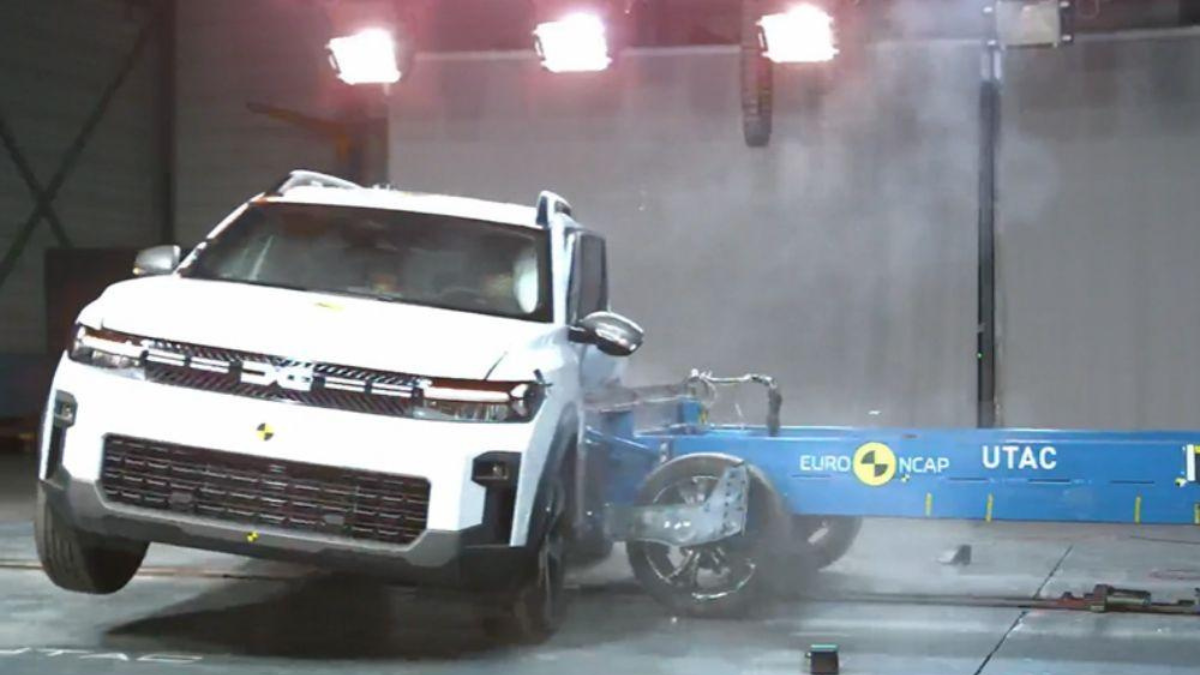The Renault Duster has long been a practical choice for budget-conscious SUV buyers. Now, its new 7-seater variant has entered the European market and undergone the Euro NCAP safety evaluation. Scoring 3 stars, the latest Duster leaves much to discuss—both in terms of strengths and where it falls short. Here’s an in-depth breakdown of what that rating really means for buyers concerned about road safety and family transport.

Renault Duster 7-Seater Earns 3-Star Euro NCAP Rating
| Category | Details |
|---|---|
| Model Tested | Renault Duster 7-Seater (2025 EU Version) |
| Safety Rating | ★★★ (3 Stars) |
| Adult Occupant Protection | 70% |
| Child Occupant Protection | 72% |
| Vulnerable Road Users | 57% |
| Safety Assist | 55% |
Key Points:
-
Moderate adult and child safety protection
-
Limited active safety features
-
Body structure shows some weaknesses in crash tests
-
New 7-seater layout may affect internal protection dynamics
What Does a 3-Star Rating Really Mean?
A 3-star Euro NCAP rating is a mixed bag. It’s not a fail—but it’s not a pass with flying colors either. This rating suggests that while the vehicle meets minimum European safety regulations, it lacks the advanced safety systems and structural integrity found in top-performing SUVs.
The Renault Duster 7-seater shows good stability in frontal impact tests, with the passenger compartment remaining mostly intact. However, marginal chest protection for the driver and rear seat occupants contributed to a lower overall score. Side impact performance was more favorable, but the absence of a center airbag hurt its final tally.
Adult Occupant Protection – Decent But Not Great
The Duster scored 70% in this category, which is acceptable but below average when compared to modern competitors. During frontal offset crash tests, the car offered good head and femur protection. However, chest compression levels for the driver were rated as marginal, lowering the overall score.
Rear seat protection was adequate but raised concerns about whiplash due to the absence of active head restraints. For taller passengers, headroom in the third row also poses a risk in the event of a rollover or rear-end collision.
Child Occupant Protection – Room for Improvement
With a 72% rating, the Duster fared slightly better in child safety but still leaves room for enhancement. Isofix anchor points are available in the second-row seats, but the third row lacks sufficient provisions for child restraints. The car performed well in dynamic crash tests using dummies simulating 6- and 10-year-old children, although head excursions were higher than expected.
Safety instructions and labels for installing child seats were also found to be insufficiently clear, which affects practical usability for families.
Protection for Vulnerable Road Users – Lacking Pedestrian Safety
The Duster’s 57% score in this category underlines one of its biggest weaknesses. The front end design does not absorb pedestrian impact effectively, particularly in the bonnet edge and windscreen pillar zones. While autonomous emergency braking (AEB) for pedestrians is technically available, it was found to be inconsistent and slow to activate in real-world tests.
This is a concern for urban users who may frequently encounter cyclists, pedestrians, and smaller vehicles in congested environments.
Safety Assist Features – Basic, Not Advanced
Scoring 55%, the Duster’s Safety Assist category reflects the car’s bare-minimum approach. It includes standard ESC (Electronic Stability Control), seatbelt reminders, and speed assistance. However, advanced driver-assist features like lane-keep assist, adaptive cruise control, and a reliable AEB system are either optional or not available in many trims.
The car’s ability to autonomously prevent or mitigate crashes is significantly behind rivals in the same segment.
Structural Analysis and Crash Performance
The structural integrity of the Renault Duster is generally solid but not fault-free. In offset frontal crashes, deformation near the A-pillar and floor area was noted. This compromises occupant survival space, especially in high-speed impacts. The use of lower-grade steel in key chassis areas has likely contributed to this outcome, a cost-saving measure that affects safety.
Moreover, the design of the third-row seating appears to be an afterthought, affecting both comfort and crash resilience. The headroom and leg support are not ideal, and there are no side curtain airbags covering the rear-most seats, which leaves rear passengers more exposed in side collisions.
Market Implications – What This Means for Buyers
For buyers in developing markets where budget often trumps safety, the Duster still presents a reasonable option. However, European buyers who prioritize safety may find better alternatives in this price range. Renault may face challenges marketing the 7-seater variant without an upgrade to its safety technology and structural design.
The 3-star rating doesn’t make it unsafe, but it certainly doesn’t put it among the top choices for a family-focused SUV in 2025.
FAQs
Is the Renault Duster 7-seater safe for families?
It meets basic safety standards, but it lacks advanced features and full protection in all seating rows. Suitable for cautious drivers in low-risk areas.
Does it include all modern driver-assistance systems?
No. Most driver-assistance features like lane assist, blind-spot monitoring, and adaptive cruise are either optional or unavailable in many trims.
Can child seats be used in all three rows?
Only the second row is properly equipped for child seats. The third row lacks Isofix anchors and is not recommended for young children.
How does it compare to 5-star rated SUVs?
It offers less protection, fewer assist systems, and lower pedestrian safety. Buyers prioritizing safety should consider higher-rated alternatives.
Click here to know more